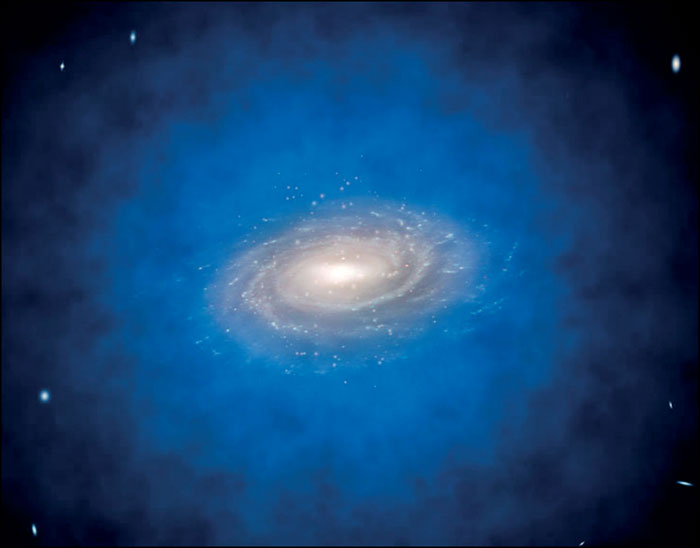
One of the issues astronomy is currently scratching its head at is how the universe formed massive galaxies so fast. For the first roughly 400,000 years, everything was a hot dense soup of colliding photons, electrons, nuclei, and other particles that were expanding and cooling but were too dense and hot to form atoms let alone galaxies. One day things did get cold enough to form atoms — that was about year 400,000 give or take — but they were still too hot for everything else. And the universe kept expanding and cooling, and we expected that stuff would start forming a few hundred million years later. Somehow, we are finding as we build bigger and better telescopes, galaxies weren’t so much starting to form; they were fully formed.
And this is deeply confusing.
Here is the problem: our universe is mostly empty space. While the modern universe has all sorts of big structures that shine in the sky, all the stuff in those structures was initially spread out pretty uniformly, and it should take time for the material to gravitationally come together.
The luminous matter – baryonic matter – isn’t the primary stuff of the universe, however. There is also dark matter – stuff that, as the name implies, refuses to interact with light. It is a whole lot more prevalent, and as we’ve realized galaxies formed early, astronomers built theories for how massive clouds of dark matter could come together early in the universe and pull in the regular matter to start galaxies earlier. This helped, but it still didn’t explain how these galaxies somehow built up supermassive black holes in their centers so fast.
So the new question became: can you make a supermassive black hole out of dark matter? It’s just stuff after all; there shouldn’t be a reason it can’t make a black hole, but it’s a matter of how would that work. Dark matter, as far as we know, consists of particles that don’t like to interact with each other or anything else, including the electromagnetic force. The question then becomes: if you pull enough dark matter into a small enough region, will it tend to collapse under gravity or will it support itself through gas pressure? This is sort of like asking: will air in a cooling room keep filling the room, or collapse condense on the floor? Eventually, it will collapse but not at a temperature we’re going to get on Earth. It turns out, however, that dark matter may collapse into black holes under the conditions that existed in the early universe.
In a new paper in Monthly Notices of the Royal Astronomical Society, with lead author Carlos Arguelles, researchers examine what conditions need to occur for dark matter to collapse into a supermassive black hole. They find that the answer depends on just how big dark matter particles may be. For particles in the TeV range – the size of a Neutrino for instance – a sphere of a billion solar masses can collapse under its own gravity to form a supermassive black hole as early as 500 million years after the Big Bang. Bigger masses could form even earlier, and this is consistent with what we’re seeing.
It’s kind of weird to think that an invisible component of our universe – dark matter – can form massive halos that collapse into supermassive black holes that are also invisible but shape everything in the galaxies that grow around them. In our universe, the brightest shining things are truly being governed by invisible hands or at least gravity from invisible sources.
This is also a case of both and. We originally thought supermassive black holes formed through the more gradual build-up of regular matter inside clouds of dark matter. That still happens. That still happens more slowly.
Our universe just found a way to fast-track the creation of galaxies, proving once again that there are often many ways to do things, and the universe doesn’t like to be limited in its options.
More Information
Royal Astronomical Society press release
“On the formation and stability of fermionic dark matter haloes in a cosmological framework,” Carlos R Argüelles et al., 2020 December 31, Monthly Notices of the Royal Astronomical Society




 Join the Crew!
Join the Crew!
 Escape Velocity Space News
Escape Velocity Space News
0 Comments